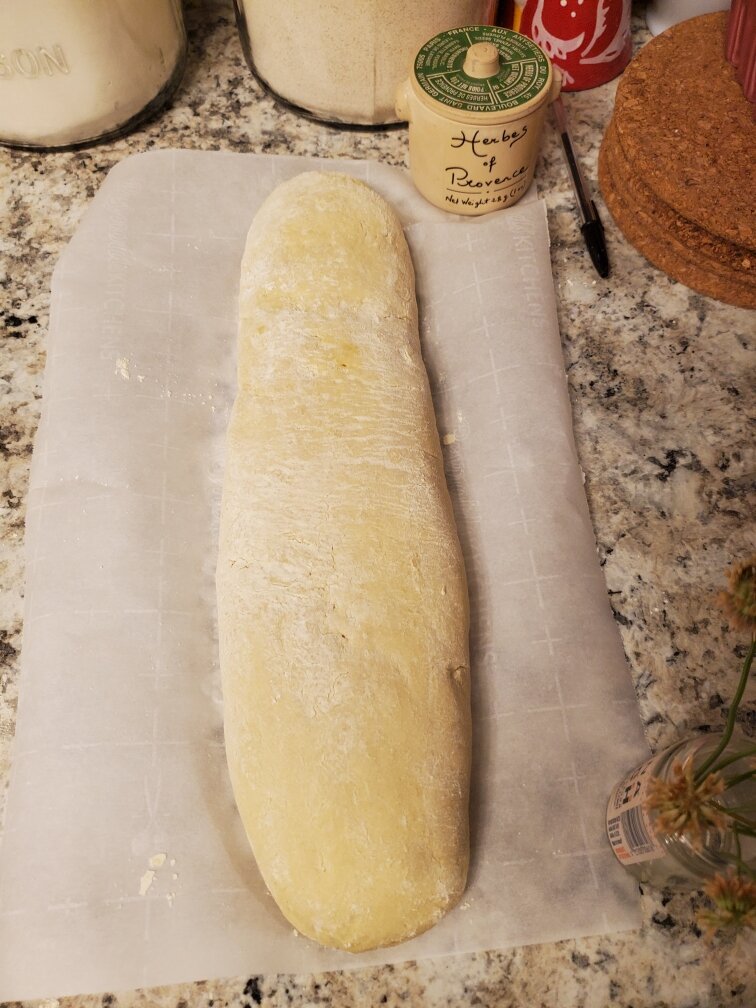Einkorn Sourdough Loaf
Alright! Been getting a lot of emails over the last few months asking about einkorn recipes. It’s really hard for all of us to know what’s in this blog or even where/when it happened, due to the astonishing amount of literature that comes out of my fingers each year! This loaf was amazing enough that I still remember it, so I figure it’s good enough for me to not need to develop a second pure einkorn structure for y’all. Enjoy your einkorn loaves!
Oh, einkorn. Sweet, creamy, wonderful einkorn. This is the grain you want to use if you’re in the market for an ancient grain that acts more closely to common wheat flour. It looks pretty similar once baked and has a comparable flavor. What we found was that the dough made with this flour rose beautifully, retained its creamy, almost vanilla notes, and had just hints of sourness from the starter to offset the sweetness of this wheat. This bread was good enough that the child tester asked us not only to keep the recipe in regular rotation, but to teach her how to make it! She also said that all the kids at school are going to be jealous of her yummy breads.
A quick note: by request, I have modified this recipe to include US/Imperial measurements and, where possible, volumetric. You will still need to double check these conversion figures, and in cases where my conversion app didn’t have a specific ingredient, you will need to play with it a bit or do a bit of extra research to figure out what the volumetric conversion is.
Here’s what you need!
450 grams (15.873 ounces) of einkorn flour
172 grams (6.067 ounces) of starter
13 grams (.459 ounces, 2.3 teaspoons) of salt
247 grams (8.713 ounces) of water
75-100 grams (2.469-3.527 ounces) of flour for kneading (I used 75, but I would have also liked the effects of 100)
As an aside, unless a recipe explicitly states that you should knead with a specified quantity of additional flour, don’t do it. Jack will explain this more accessibly than I would, so we’ll let him do the work for me. I totally have a baking crush on Jack, y’all. He’s totes adorbs.
Let’s make the dough!
Mix together the flour and starter. Let it rest for 5-10 minutes, then mix in the salt and water. Let it rest again, this time for about 30-45 minutes. Then, the kneading begins! You’ll knead this loaf for 10 minutes with the additional flour requested. If you prefer not to knead with flour at all, that’s okay! Just add this flour in during the initial mixing and you’re all set!
Next, you will form your dough into a slightly tacky ball and put it in an oiled bowl. It shall rise there for about 12 hours. Overnight is fine here, too. I just usually deal with my doughs after the kid is off to school. Either way, you’re looking to prove it until it’s grown 50% larger. With modern wheat, we prove until doubled in bulk, but einkorn can produce flatter loaves if it’s done the usual way. If you don’t think you’ll remember how big the dough started (me!), go on ahead and draw a line on the outside of the bowl with a Sharpie or other marker, piece of tape, whatever you need to mark that starting spot.
Shape and rise!
I wanted a long, French bread-style loaf, so that’s the shaping I went with. To do this, I gently teased the dough out of the bowl until it was all on my board with the top side of the dough (top from how you found it in the bowl) down on your board. I gently tugged it into a sort of oblong shape, and then shaped it into something similar to a batard (I tend to prefer rounder edges, so I rarely do a traditional batard). Shall we have another gratuitous Jack video to show us how? Sure, why not? But when you’re done shaping, rise that loaf another 2 hours.
Here’s what my “batard” looked like. It’s really not a proper batard, but that’s okay.
As you can see, lazy-style batard-ish.
Bake time!
Preheat your oven to 425F/220C/gas mark 7 and bake for 35 minutes. I sprayed the inside of my oven with a squirt bottle (you could use a water gun, if handy, too) right after I put the loaf in there, then closed the oven with a quickness. That steam gives you much, much crispier crusts! After 25 minutes, I opened the oven to rotate the loaf. After the 35 minutes is up, turn off the oven and let the loaf sit there 30 minutes, then remove and cool it completely before cutting!



